I met Mony from Soksabike early one morning to head out on a ‘Cambodian Livelihoods Tour’ which promised a day of exploration of the Cambodian countryside and to experience how local families live and how they make a living.
Before we got on our bikes Mony gave me a lesson on the Khmer language as well as instruction on how to greet the families we would be meeting. Hands together in a prayer position and if the person I was greeting was an elder the hands were to be placed higher up on the face vs. a child where they should be placed lower, towards the chest. Mony provided me with a list of various greetings, questions and responses in Khmer and I awkwardly repeated each sentence, forgetting each one pretty much immediately! Not a great start to the day, however by the end of it I was comfortably greeting people that we met with the formal ‘chum reap sour’, saying goodbye with ‘chum reap leah’ and lots of thank yous – ‘orkun’ in between.
Our first stop was a family who made rice paper, they type that’s used in rice paper rolls. They make between 2,000 and 4,000 per day, depending on how hot it is as this dictates how quickly the rice paper dries. It looked like backbreaking work, especially for the Aunty who had the job of preparing the mixture and cooking it on the hot stone.
For each family Mony also told me a little about their history and how they were impacted by the Khmer Rouge Regime. Most of the families lost everything that they had and were forced to leave their homes and livelihoods to work in the countryside as farmers. These were incredibly moving stories and really put the atrocities of the past into a current context.
Our next stop was a family who produced dried and sweet fried bananas as well as various other produce. We spent time chatting to the mother of the family about her children as she cut slices of fresh banana and laid them out on bamboo boards to dry in the sun.
Onwards, to rice wine! Mony told me that the rice wine made by this one family was the best in the district because they produced the best yeast. Now I may have missed some of the process but I think in short the rice is soaked, drained, cooked and then laid out to dry. The yeast is then added and it’s cooked again and the vapour that comes from the cooking process is captured and cooled so that it condenses…and that’s the rice wine, or something similar! I was expecting not to like it but it was smoother than I expected and gently warmed my insides.
On the way to our next stop, a fish paste producer, we stopped at a local school which caused a fair bit of excitement!
Fish paste is an integral element to pretty much all Khmer food, it’s very potent, rich and rather smelly!

Barrels of all kinds of different fish that are compressed and left to ferment for months at a time to create fish paste.
We stopped for a fabulous lunch hosted by a local family, which was followed by a snooze in a hammock to escape the heat of the day.
After lunch we cycled to Wat Phiphétaram where Mony told me a number of stories about the life and enlightenment of Buddha as we walked around the statues and through the temples.
After the temple we visited a mother and her daughter who produced sticky rice. I looked on in astonishment as the daughter, probably no more than 4 or 5 quite effectively welded a large cleaver to cut up strips of bamboo!
Our final stop was a sobering visit to Wat Somrong Knong and the Well of Shadows, a monument to the Khmer Rouge genocide. Wat Somrong Knong was turned into a prison during the regime and the surrounding areas were used as killing fields where over 10k people died. The monument contains a glass case with the skulls and bones of the victims found in the killing fields and is surrounded by a bas-relief that graphically depicts the atrocities that took place there.
….and finally a picture from the day that makes me smile.
Written from the YWCA, Colombo, Sri Lanka.





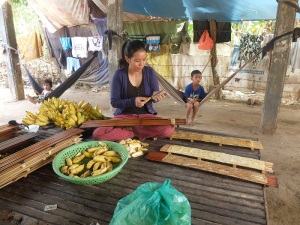


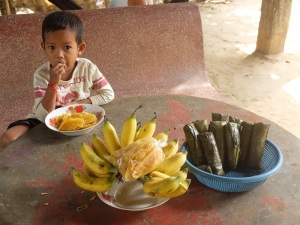




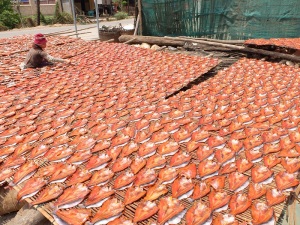



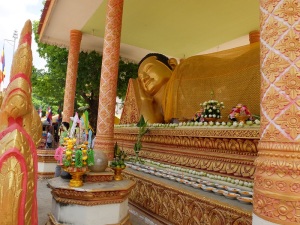





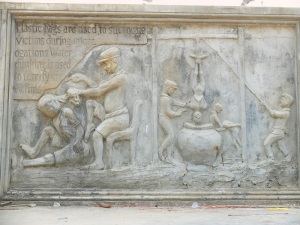
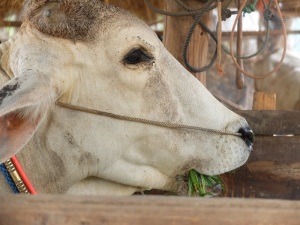

Amazing!
LikeLike